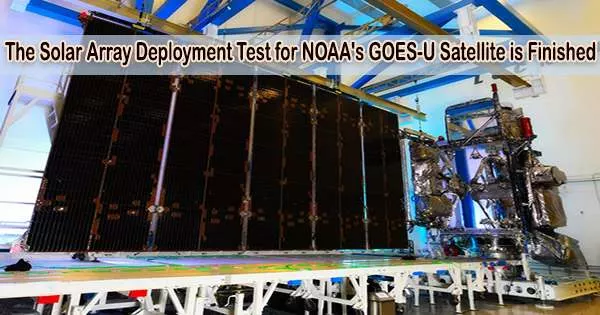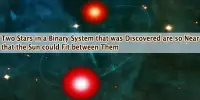In order to make sure it will work properly in space, GOES-U, the fourth and last satellite in NOAA’s GOES-R Series, recently finished a successful test deployment of its solar array.
This important test proved that the massive, five-panel solar array, which is folded up when the satellite is launched, will function as intended once GOES-U reaches geostationary orbit.
Engineers conducted this test by spreading out the five panels, which replicated the zero-gravity conditions of space. Each solar panel is approximately 13 feet tall by 4.5 feet wide and weighs approximately 45 pounds.
Once GOES-U is in orbit, the deployed solar panels will come together to form a single solar array wing that will rotate once every day to keep the photovoltaic (solar) cells on the satellite pointed continually toward the sun.
The instruments, computers, data processors, sensors, and telecommunications gear on the satellite will all be powered by photovoltaic cells, which will transform solar energy into electricity.
More than 5,000 watts of power for the satellite will be produced by the solar array. This is comparable to the energy required to run your home’s central air conditioning system.
The solar array was developed and built by Lockheed Martin at its Sunnyvale, California, facility and tested at Lockheed Martin’s facility in Littleton, Colorado, where GOES-U was assembled. GOES-U is scheduled to launch in April 2024.
The GOES-R Program is a collaborative effort between NOAA and NASA. For NOAA, who manages them and disseminates their data to customers across the world, NASA constructs and launches the satellites.
The satellites offer vital information for weather forecasts and alerts, for spotting and keeping track of environmental dangers including fire, smoke, fog, volcanic ash, and dust, and for tracking solar activity and space weather.
















